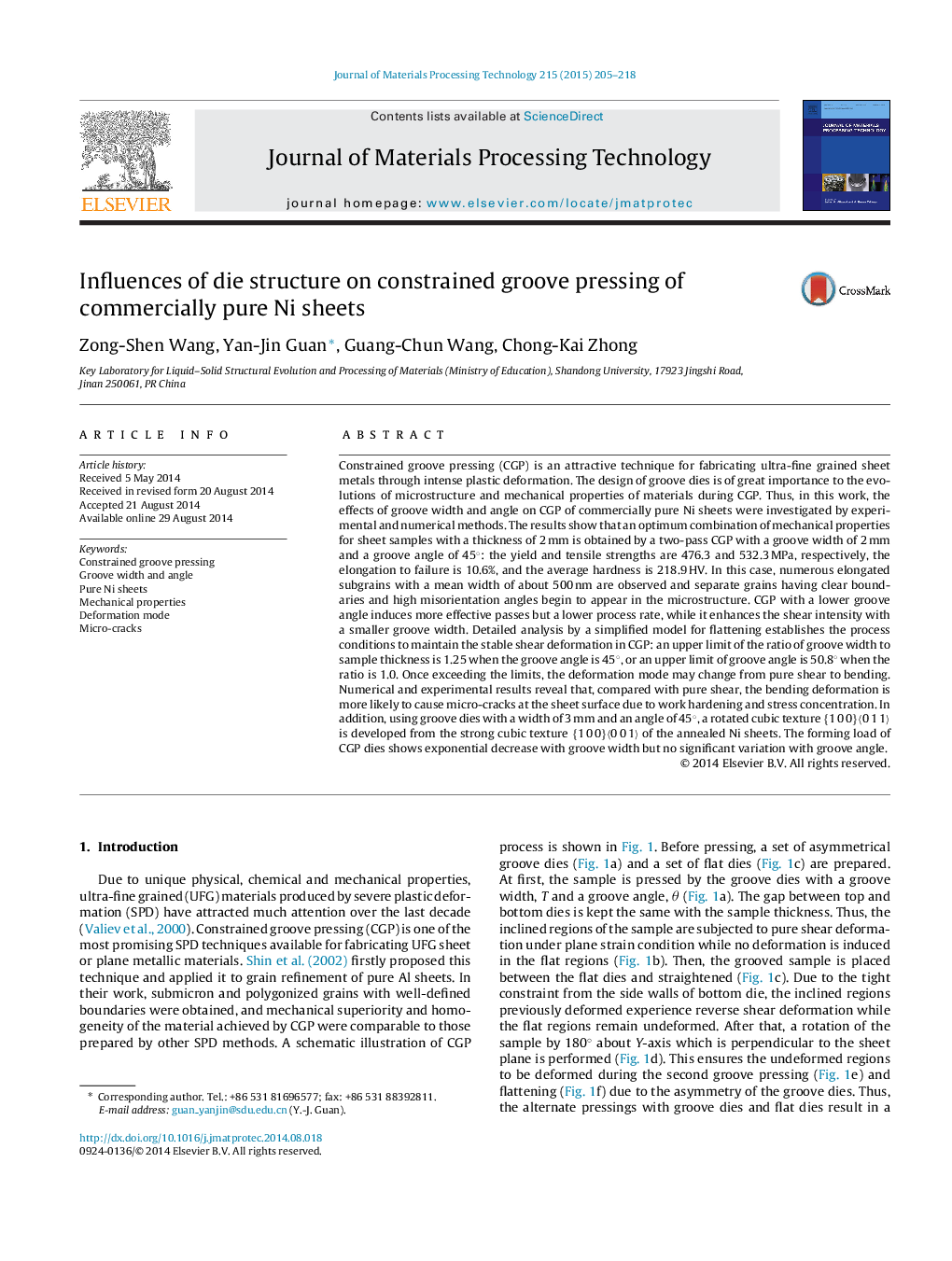| کد مقاله | کد نشریه | سال انتشار | مقاله انگلیسی | نسخه تمام متن |
|---|---|---|---|---|
| 7177306 | 1466752 | 2015 | 14 صفحه PDF | دانلود رایگان |
عنوان انگلیسی مقاله ISI
Influences of die structure on constrained groove pressing of commercially pure Ni sheets
دانلود مقاله + سفارش ترجمه
دانلود مقاله ISI انگلیسی
رایگان برای ایرانیان
کلمات کلیدی
موضوعات مرتبط
مهندسی و علوم پایه
سایر رشته های مهندسی
مهندسی صنعتی و تولید
پیش نمایش صفحه اول مقاله

چکیده انگلیسی
Constrained groove pressing (CGP) is an attractive technique for fabricating ultra-fine grained sheet metals through intense plastic deformation. The design of groove dies is of great importance to the evolutions of microstructure and mechanical properties of materials during CGP. Thus, in this work, the effects of groove width and angle on CGP of commercially pure Ni sheets were investigated by experimental and numerical methods. The results show that an optimum combination of mechanical properties for sheet samples with a thickness of 2 mm is obtained by a two-pass CGP with a groove width of 2 mm and a groove angle of 45°: the yield and tensile strengths are 476.3 and 532.3 MPa, respectively, the elongation to failure is 10.6%, and the average hardness is 218.9 HV. In this case, numerous elongated subgrains with a mean width of about 500 nm are observed and separate grains having clear boundaries and high misorientation angles begin to appear in the microstructure. CGP with a lower groove angle induces more effective passes but a lower process rate, while it enhances the shear intensity with a smaller groove width. Detailed analysis by a simplified model for flattening establishes the process conditions to maintain the stable shear deformation in CGP: an upper limit of the ratio of groove width to sample thickness is 1.25 when the groove angle is 45°, or an upper limit of groove angle is 50.8° when the ratio is 1.0. Once exceeding the limits, the deformation mode may change from pure shear to bending. Numerical and experimental results reveal that, compared with pure shear, the bending deformation is more likely to cause micro-cracks at the sheet surface due to work hardening and stress concentration. In addition, using groove dies with a width of 3 mm and an angle of 45°, a rotated cubic texture {1 0 0}ã0 1 1ã is developed from the strong cubic texture {1 0 0}ã0 0 1ã of the annealed Ni sheets. The forming load of CGP dies shows exponential decrease with groove width but no significant variation with groove angle.
ناشر
Database: Elsevier - ScienceDirect (ساینس دایرکت)
Journal: Journal of Materials Processing Technology - Volume 215, January 2015, Pages 205-218
Journal: Journal of Materials Processing Technology - Volume 215, January 2015, Pages 205-218
نویسندگان
Zong-Shen Wang, Yan-Jin Guan, Guang-Chun Wang, Chong-Kai Zhong,